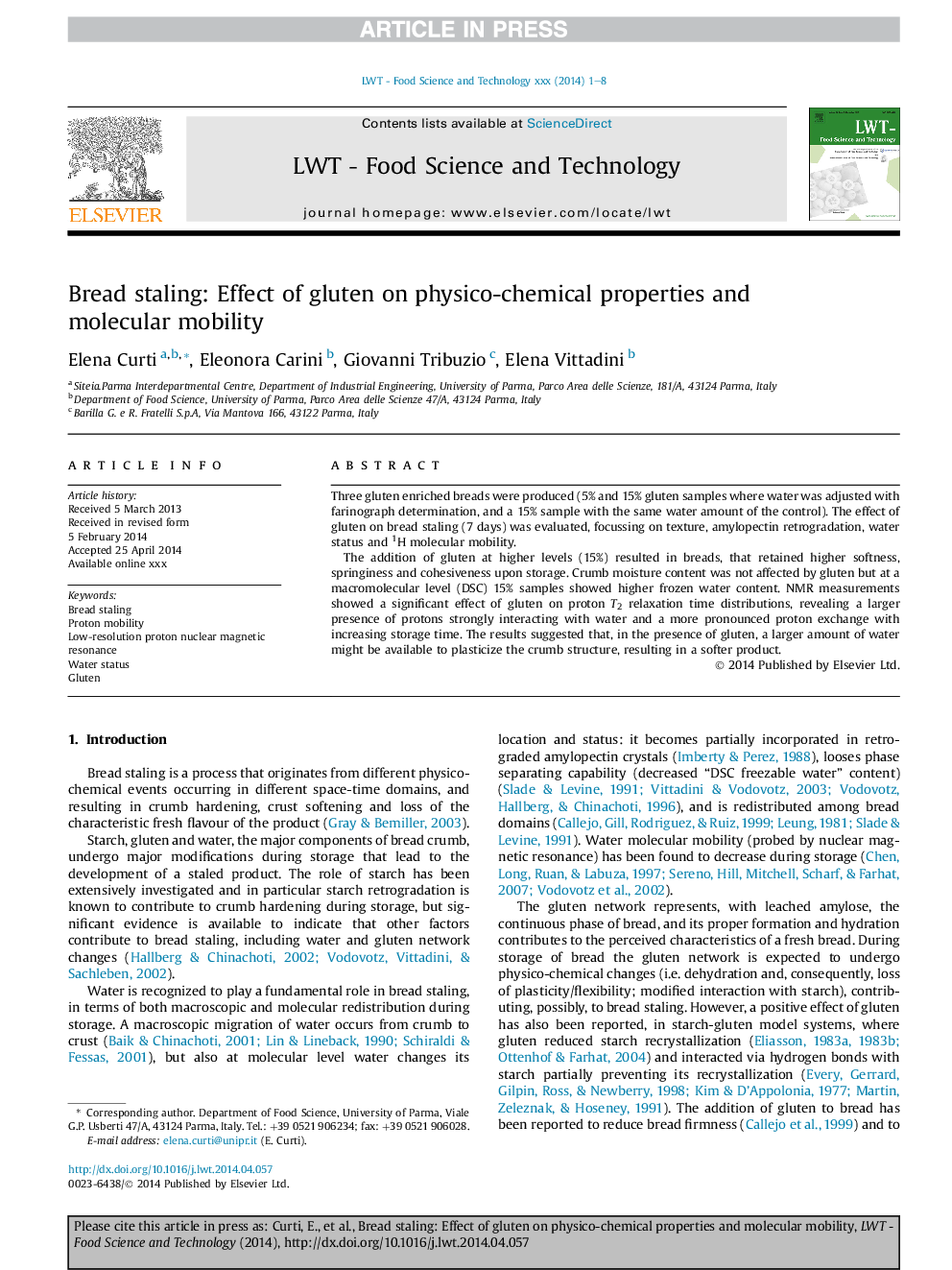| Article ID | Journal | Published Year | Pages | File Type |
|---|---|---|---|---|
| 6403647 | LWT - Food Science and Technology | 2014 | 8 Pages |
Abstract
The addition of gluten at higher levels (15%) resulted in breads, that retained higher softness, springiness and cohesiveness upon storage. Crumb moisture content was not affected by gluten but at a macromolecular level (DSC) 15% samples showed higher frozen water content. NMR measurements showed a significant effect of gluten on proton T2 relaxation time distributions, revealing a larger presence of protons strongly interacting with water and a more pronounced proton exchange with increasing storage time. The results suggested that, in the presence of gluten, a larger amount of water might be available to plasticize the crumb structure, resulting in a softer product.
Related Topics
Life Sciences
Agricultural and Biological Sciences
Food Science
Authors
Elena Curti, Eleonora Carini, Giovanni Tribuzio, Elena Vittadini,
